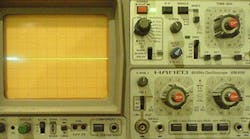A few months ago, Control's sister publication, Industrial Networking, carried a few articles by P. Hunter Vegas covering some of the unpleasant or unforeseen aspects of fieldbus installations. One of the scary pitfalls that Mr. Vegas cites is that "troubleshooting fieldbus is rarely straightforward," and that one might need to "disconnect segments and shoot them with oscilloscopes and meters" in order to detect and correct issues. It causes me to wonder whether the installation in question was being commissioned in this century or not, since it contradicts the experience of a host of end users. I've had an oscilloscope in the plant for more than over 10 years, and the battery is usually dead.
The majority of fieldbus problems—over 90%—are due to issues with the "physical layer," such as wire, terminations, couplers and power supplies. We're talking rudimentary stuff here, as in loose terminations, stray wire strands, incorrect grounding of shields, and having too few or too many "terminators," which are the fixed impedances at either end of Profibus PA or Foundation fieldbus segments that converts ±10 mA current signals to a voltage.
I found a useful little guide on the RelcomInc.com website (www.relcominc.com), called "Preventing Fieldbus Physical Layer Problems." In less than 10 pages, it delivers sufficient advice for even the marginally literate because pictures and illustrations are abundant. There's a page devoted to Relcom's specialized test equipment, at least one of which was available in the last century, the "Field Bus Tool" or FBT-3. Its more capable sibling, the FBT-6, has been available over five years. Both are extremely helpful in troubleshooting a network problem. Two or fewer buttons and two lines of LCD text means both are good for the oscilloscope-challenged.
[pullquote]One day, we did experience a problem for which the old 1999-vintage Fluke 196 "Scopemeter" proved very useful. Communication errors began cropping up on a segment that had been working for many years. The Relcom tester showed we had a lot of low-frequency noise, and when we hooked up the Fluke, we could clearly see a low-frequency wave form superimposed on the 31.25 kHz fieldbus signal. Through a process of elimination, we isolated the problem to our non-redundant MTL5995 power supply, which was installed years ago without any gaps between it and its neighbors. This interfered with heat dissipation, and after five years of relentless cooking (they're never powered down), it began to falter.
We caught this one before it caused any process disruption, and the Fluke allowed us to easily identify about 30 others that were headed down the same path. The next turnaround, we were able to replace all these before they had any impact on production. We still use the 5995s, but ensure they're installed with the required spacing between them.
Granted, oscilloscopes are a little intimidating. Even the portable Flukes have as many buttons as your cable TV remote, and figuring out how to display the waveform of interest can be a challenge for the novice or the infrequent user (like me). But, today, you can buy a Fluke that's customized for buses. At least three Flukes include the "Bushealth" function, which provides a real-time assessment of the health of the segment to which you're connected. For the 31.25 kHz buses like Profibus PA and Foundation fieldbus, 10 parameters are displayed, including DC voltage, peak-to-peak voltage, jitter and noise in three bands. Interpreting the readings is further simplified on the more expensive color models, displaying a green light for "good" and a red one for "trouble."
If you're an old timer who excelled at troubleshooting 4-20 mA and are trying to apply the old paradigms to digital networks, you might have some frustration. However, your traditional standards for a trouble-free installation still apply, and should you have to "shoot" a network with an oscilloscope, you'll find tools that are feature-laden and much easier to use.





